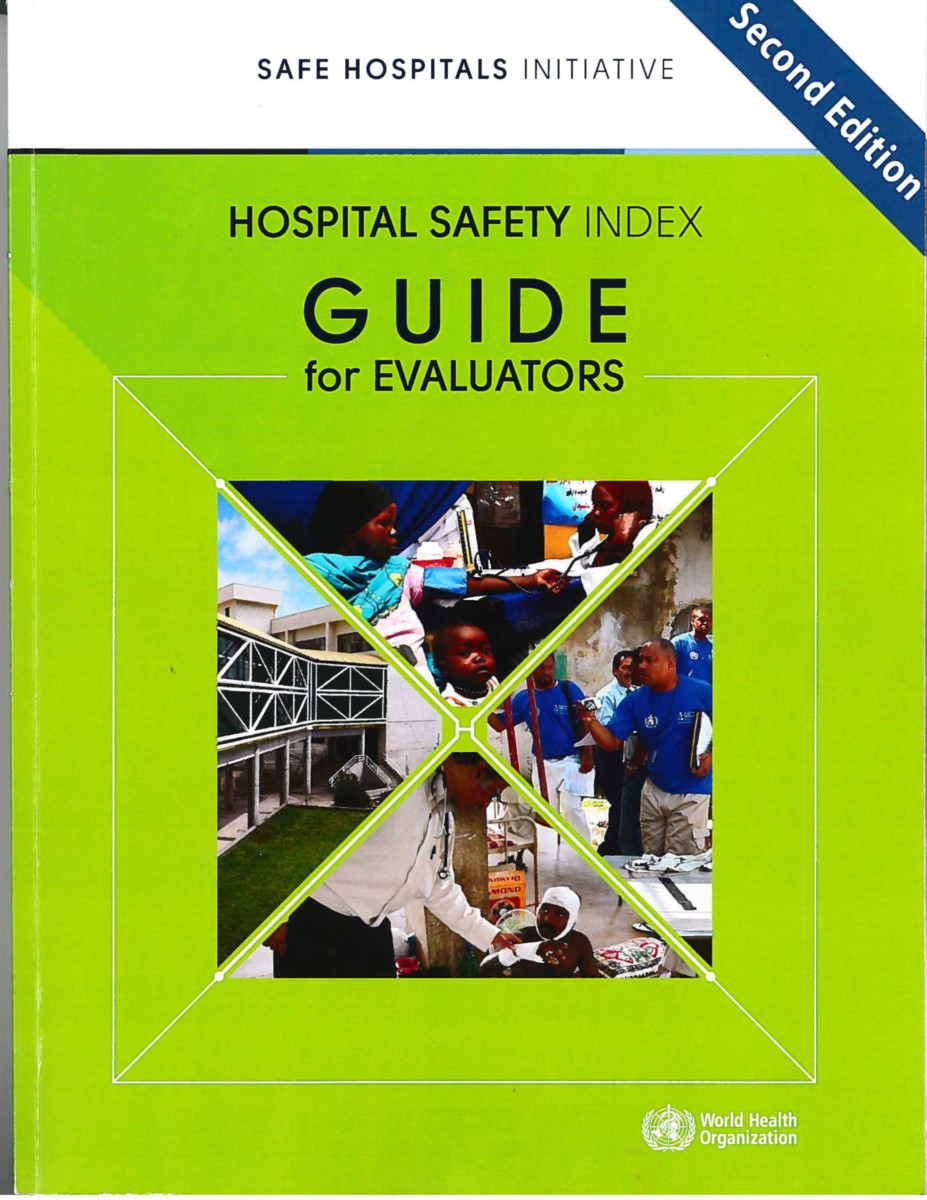Hospital Safety Index Edition 2
Guide for Evaluators (with booklet of evaluation forms)
- Publisher
World Health Organization - Published
15th January 2017 - ISBN 9789241548984
- Language English
- Pages 220 pp.
- Size 6.5" x 8.875"
This guide provides a step-by-step explanation of how to use the Safe Hospitals Checklist, and how the evaluation can be used to obtain a rating of the structural and nonstructural safety, and the emergency and disaster management capacity, of the hospital. The results of the evaluation enable hospital's own safety index to be calculated.
The Hospital Safety Index tool may be applied to individual hospitals or to many hospitals in a public or private hospital network, or in an administrative or geographical area. In some countries, such as Moldova, all government hospitals have been evaluated using the Hospital Safety Index. In this respect, the Hospital Safety Index provides a useful method of comparing the relative safety of hospitals across a country or region, showing which hospitals need investment of resources to improve the functioning of the health system.
The purpose of this Guide for Evaluators is to provide guidance to evaluators on applying the checklist, rating a hospital's safety and calculating the hospital's safety index. The evaluation will facilitate the determination of the hospital's capacity to continue providing services following an adverse event, and will guide the actions necessary to increase the hospital's safety and preparedness for response and recovery in case of emergencies and disasters. Throughout this document, the terms "safe" or "safety" cover structural and nonstructural safety and the emergency and disaster management capacity of the hospital.
The Hospital Safety Index is a tool that is used to assess hospitals' safety and vulnerabilities, make recommendations on necessary actions, and promote low-cost/high-impact measures for improving safety and strengthening emergency preparedness. The evaluation provides direction on how to optimize the available resources to increase safety and ensure the functioning of hospitals in emergencies and disasters. The results of the evaluation will assist hospital managers and staff, as well as health system managers and decision-makers in other relevant ministries or organizations in prioritizing and allocating limited resources to strengthen the safety of hospitals in a complex network of health services. It is a tool to guide national authorities and international cooperation partners in their planning and resource allocation to support improvement of hospital safety and delivery of health services after emergencies and disasters.
Over the past three years, the expert advice of policy-makers and practitioners from disciplines, such as engineering, architecture and emergency medicine, has been compiled, reviewed and incorporated into this second edition of the Guide. Global and regional workshops and virtual consultations have enabled technical and policy experts to contribute to the revision of Hospital Safety Index until consensus was reached on the content for its publication and distribution. Further comments and observations are certain to arise as the Hospital Safety Index continues to be applied across the world and these experiences will enable us to improve future editions.
The rapid diagnostic application of the Hospital Safety Index provides, as a comparison, an out-of-focus snapshot of a hospital: it shows enough of the basic features to allow evaluators to confirm or disprove the presence of genuine risks to the safety of the hospital, and the hospital's level of preparedness for the emergencies and disasters to which it will be expected to provide health services in the emergency response. The Hospital Safety Index also takes into account the hospital's environment and the health services network to which it belongs. This second version of the second edition was released in December 2016.
World Health Organization
World Health Organization is a Specialized Agency of the United Nations, charged to act as the world's directing and coordinating authority on questions of human health. It is responsible for providing leadership on global health matters, shaping the health research agenda, setting norms and standards, articulating evidence-based policy options, providing technical support to countries, and monitoring and assessing health trends.


